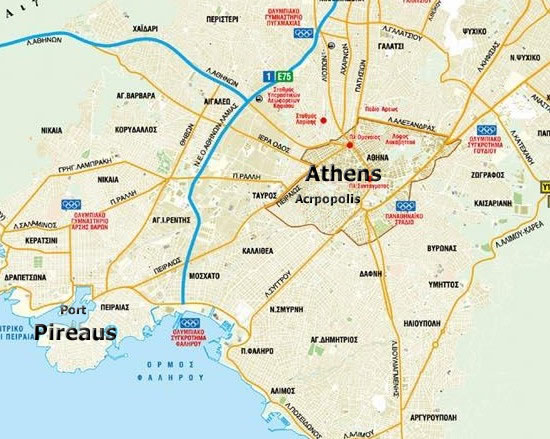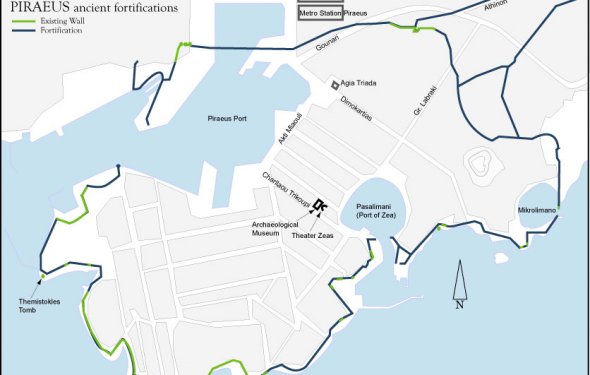relates his tale as almost an historical narrative. He was
taken prisoner at Sapanca, east of Izmit, in March 1921
and transported to Izmir, Athens, Crete and back to Athens
before being returned to Turkey in the first part of 1923.//
The Interesting Adventure of a Prisoner from Sapanca
Herewith I am venturing to present and express in brief the
Greek
degradations and calamaties I witnessed and observed while being
subjected to them during my two years in captivity. I request that
you publish them if you deem
it suitable through your resources (*)
(*) addressed to the Adapazarı District Chief
I was taken prisoner by the Greeks on 28 March 1921. I have yet to
encounter a statement-giver who
fell prisoner to the Greeks and who
was not subjected to countless beatings and
tortures. Since our region
was on the
front where the Greeks had militarily occupied our country,
35 of us were taken and subjected to beatings, cruelty and
torture, as
we were all seized at night, our arms bound tightly with rope.
We were linked together in a line of
sergeants and soldiers and forced
to march to İzmit till we were ready to drop,
absorbing the blows of rifle
butts inflicted by Greek gangs along the way. In Izmit, the insults the
local Greeks rained
down on us were indescribable. En route
the gangs
stole our clothes, boots and money.
I was put barefooted into the İzmit
jail and 11 days later I was in the
first convoy of 11 convicts from Izmit
sent to Izmir and from there to
Athens.

We were displayed to the public
at various location as we were
transported to Lucia prison camp, near Athens,
where there were about
400 civilian prisoners from Asia Minor. Twice in 1.5 months we were
attacked by the
local populace and soldiers so after we complained about
this to the command
and to the prisoners supervisory office, we, together
with Moslems from
Salonica and from east and west, based on the
likelihood that more civilians
would be coming to the already cramped
camp, were transported to Crete where we
continued our captivity at a
civilian prison camp under military supervision
for two years.
After staying in the city
of Hanya for 1.5 months, we were transported
1.5 hours away to the port of
Souda, where the late Sultan Abdülaziz had
built a big naval barracks. There was a large wall associated with the
shipyard and all that remained of the mosque was a minaret. A wide area
of about 100 dönüm (about 25
acres), surrounded by a wall, was watered
by a fresh and pure source Sultan
Abdülaziz had had brought down from
the mountain there.

Souda is just east of Hanya (Chania).
When the Greeks were defeated at Sakarya and
had to retreat, the Cretian
Greeks, who were mostly supporters of Venizelos,
published a letter that
Venizelos wrote to Gounaris from Paris, in which he
said that if the Greek
army didn’t take the offensive all would be lost and
defeat certain. A
rebellion on Crete
began, as the people wondered why Venizelos’s
recommendation had not been
followed and bemoaned the loss of over
50,000 Greek soldiers. We saw this rebellion with our own eyes and it
was more serious than the newspapers wrote.
In fact, all of Crete fell
into the hands of the Venizelos supporters
and as the result of a 4-day
battle, during which naval guns were fired from
offshore, the
government realized that it could only maintain Hanya and
accepted the
proposal of the Venizelos supporters, joining that group, at least
temporarily.
During the 4-day battle,
when everything was under the occupation of
the Venizelos supporters, we were
left hungry and faced with being
massacred at any time. In fact, a gang detachment was designated to
annihilate us but the Greek women of Souda Bay warned the detachment
commander
that their own sons were being held prisoner in Ankara and
they didn’t want the
same fate to befall their sons.
Consequently, our annihilation was deferred. Similarly, on 26 August
1922, the newspaper
‘Patris’ in Hanya published a note from the English
general staff, which said
that “if the Turks bombard Afyonkarahisar for
5 months, the city may
fall.” With the start of this attack in August,
the Greeks lost hope
and, thank God, within 14 days our nation scored a
great victory, with the
Greek army both totally defeated and forced to
confess that the Greeks had to
flee to their homelands.

Greeks fleeing from Izmir in September 1922.
When
desperation and disorder arose because of the Turks’ great attack,
rebellions
resumed in Greece and on Crete. So we
were transferred
from Souda to Hanya at 3 in the morning and put into the
Mevlevi lodge
there. This time, the government realized that it could not stem
the
rebellion and governor and all naval troops fled the island. As soon as
the Venizelos rebels entered the
city they killed 12 of the local Moslems,
stole property and money, bringing
the city to a state of disorder with
their gunfire and prompting the French and
Italian consuls to alert
government officials.
The matter was made known to the Turkish governments in Istanbul
and
Ankara, as well as to the Entente Powers, with the result that order
was
restored, for the most part.
Consequently, about 35,000 Cretian
Moslems and prisoners were saved from
a massacre, which was,
however, quite openly discussed at a meeting were
Venizelos’s nephew
was in attendance. At
the meeting, Venizelos’s nephew said that Greek
prisoners in Ankara would be
massacred in kind if such an event were
to occur on Crete.
As a result, for a week we had no guards and
set up patrols to defend
ourselves with bats and iron bars, to the extent
possible. After staying
at the Mevlevi
Lodge for 5 months the prisoner exchange agreed upon
at Lausanne were set to
begin through the good offices of the Red Cross.
We were able to secretly read about this news
in the Yeni Asır newspaper
from Salonica and in Istanbul newspapers that the zealous
and self-
sacrificing Hanya Moslems gave to us.
In the event that a Moslem
obtained a Turkish newspaper from a Greek
subject there would be a
5-year jail sentence.
Nevertheless, we were able to read them secretly through the efforts of
the Cretian Moslem notables and the consulates.
We, too, were aware of
the situation there and I cannot help but mention
that the the Cretian
Moslems were in dire straits. Many mosques had been turned into
churches,
foundations were attacked, and their honor and chastity were
molested, as the
Moslems were being gradually annihilated.
The Greek
migrants increased and all the Moslem real estate and property
in the
villages was seized so the Moslems had to seek refuge in the provincial
capital to save their lives. They waited
with great patience for the
population exchange to begin. Thankfully, they are deeply religious
Moslems.

Pashalimanı is at the small circular body of water opposite
Pireaus port.
In accordance with the Lausanne
Agreement’s prisoner exchange
provisions, we were transported from Crete to
Paşalimanı and from there
to Athens. At
this time, Ali Mustafa Bey, the head of the prisoners
commission for the
Turkish Red Crescent, came to Athens, as well.
We were able to freely tour
around the various sections of Athens for
15 days and talk with our other prisoners at the cavalry barracks, and at
the POW camps at Paşalımanı, Piraeus
and Lucia.
While I was walking around
Umumliya (Omonia?) Square in Athens I
encountered a 12-year-old Anatolian boy and two
covered Moslem
women who perceived that I was a civilian prisoner. The child told me
that “I work in the poor
house with 6 friends but they don’t consider us
to be prisoners so we cannot be
sent back to our homeland.” Similarly,
the women said that “from what we have heard, there are 32 women and
17 children at your camp and understand that you will be leaving this
week. There are 4 of us women but they don’t
consider us to be
prisoners. We are in a very difficult situation.”

Turkish POWs in Athens in late February 1923, preparing for
return to Turkey and visiting the graves of fallen Turkish
POWs.
I recommended
that they go to see Ali Mustafa Bey but they countered
that “we went to see him
but we couldn’t find him.” Again and
again
they asked me to intercede for them.
I explained that we would be
leaving on Monday and I told the child to
flee to Piraeus and, in fact, he
showed up at the pier on that day. Ali Mustafa took the child by the hand
and
put him on the ship himself. The child
said that the priests had gave
him some lessons for conversion to
Christianity.
When we were supposed to
depart, the Pontus incidents were raised as a
problem so we were delayed a
week. Finally, we were among 397 people
in the first convoy who returned to the homeland and we kissed the
ground upon
our arrival, thanking God for our safe return.
We said
prayers for a week with the Moslem clergy from Istanbul, Bursa
and Izmit
for our army’s victory and for the devastation of the enemy. I am very sad
that there are many of our
fellow Moslems who remain in Greece,
sentenced to 100-year prison terms. There are thousands of Moslems in
fortresses
and dungeons who have not yet returned.
I saw Greece as a
country of hungry people who are unable to live
properly. I personally
saw 400 Moslems
in the İzeddin Fortress. I appeal to our
government
for their deliverance.
29 July 1923
Hâfız
Ahmed Hamdi from the Cami-i cedid quarter of Sapanca
İzeddin Fortress, Souda Bay, Crete
//END of PART XIX//

Hiç yorum yok:
Yorum Gönder